#OLOGÁ
Explore tagged Tumblr posts
Text
El Relámpago (part1)
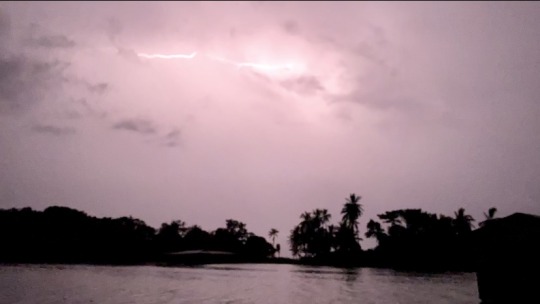
Está por llover.
Estoy invisible e insonoro. Imposibilito las fuerzas del mal que desean controlarme. Tentarme pueden, pero jamás controlarme. En el acto por desinfectar una pandemia, ¿Comprender el cauce de este mundo? Pero la verdad es que solo consideramos en la ecuación lo visible que lo mueve. Y dejamos por alto las fuerzas invisibles que se manifiestan detrás de la emociones, de la luz y la noche. Detrás de la cortina apenas recuerdo el tiempo.
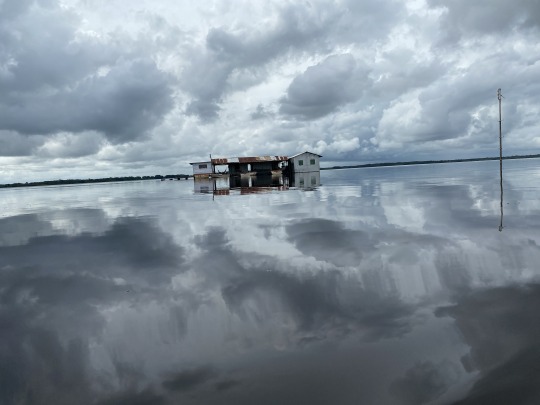
Soy la fuerza viajando sobre un espejo de agua. Sumergido en la ecuanimidad de las corrientes que mueven el bote. El corazón está afuera. Tan lejos como aquel cacho de luna que se asoma sobre la jungla / o del lejano manto de estrellas que termina con los destellos de un relámpago. Aún desconocido. Y quizás aún más lejano.
Comienzo a catar los sonidos de las profundidades. Escribir se hace portal, dimensión de encuentros y desencuentros, de comienzos sin finales. Convivo de nuevo con lo abstracto y el enojo de lo incomprensible dibujan deseos con las siluetas de las sombras. Un fuego tenue anuncia que llegamos al puerto.
La luz atrae la vista. En cualquiera de sus manifestaciones; fuego, luciérnagas, resplandor, relámpagos y también las cósmicas. El odio se ve atrapado por cantos de baladas, gaitas y otras melodías de repetición ilimitada...
En un suspiro hondo me cuestiono si estaba preparado para esta ofrenda;

Quizás no entiendo realmente el significado de estas oraciones musicales y el director termina desesperadamente buscando la respuesta en los testimonios de otros. Tal vez nadie lo sabe y el mejor consejo lo sigue aportando el teñir de un atardecer o el canto de algún ave que aporta con su vuelo. Al final, el objetivo no es la ofrenda en sí, sino los contextos que crea para cada quien que es llamado por ella.
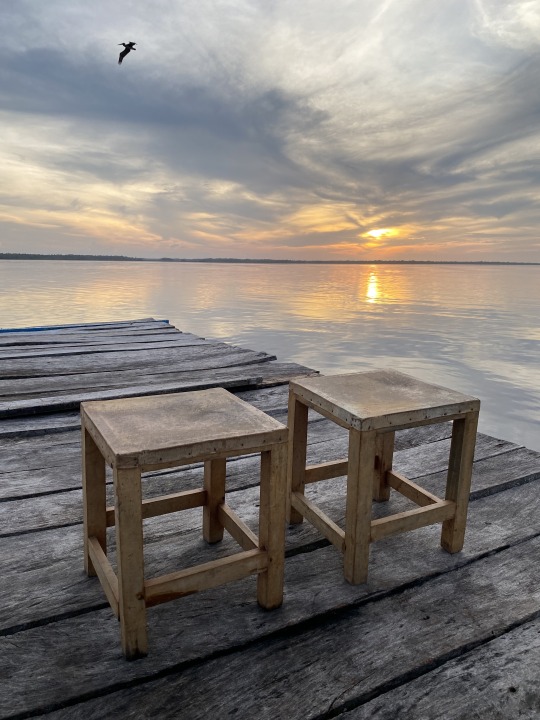
Ella
Y la pregunta continúa. Por qué siempre se trata de ella (?) Como si fuese de una persona que no se olvida o aquel beso que se tatúa en el recuerdo de karmas pasados. No! Y es que la libertad; libertad que es vida, vida que es búsqueda, búsqueda que se transforma en soledad, soledad que se transfigura en ella. Ella; continúa estimulando un juego cósmico del lenguaje que evitan que él, con misión de cuatro letras, se detenga con las formas de cualquier otro pronombre.
Amor. Sólo ella goza abrazarlo dentro de la dimensión del tiempo. Entonces la vida se transforma en una ofrenda mientras la ofrenda te exige la vida; Ella (…)
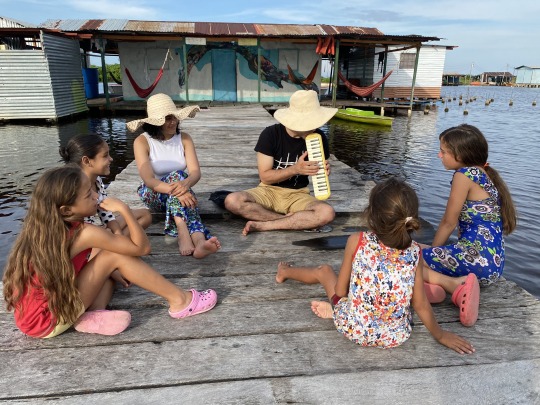
En el río Catatumbo
Documento que después de un fallido intento de llegar al puerto del relámpago por el río Catatumbo, casi pierdo la fe. El motor que impulsaba la embarcación que nos transportaba se dañó. Al principio me llené de tristeza por factores múltiples del sentir. En un silencio profundo solo pude contemplar que la tripulación que me acompañaba no entendían la ofrenda, tampoco mi llegada en tiempos de pandemia y mucho menos, la razón del encuentro con un relámpago. En otras palabras, éramos un grupo de turistas compartiendo cantos y tragos mientras el llamado era hacia un grupo de científicos integrando sus esencias alquímicas para la consolidación de una oración. En perspectivas multidimensionales, una es la lancha y la otra el motor. Y por eso, detrás del rostro y el silencio, la tristeza de casi perder la fe.
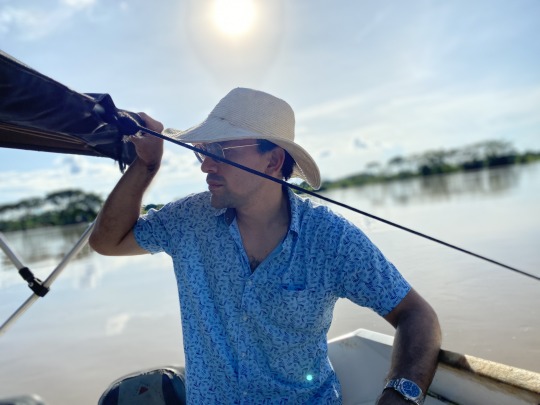
Al fallar el motor, solo me quedaba una opción: Saltar! Y es que la vida pierde sentido si nos convertimos en una lancha sin fuerza para navegar, a la deriva de un cause sin destino propio. Así que salté: “Para volver a comenzar”
En otra dimensión, mi encuentro con el río Catatumbo fue sublime. Un atardecer en la proa de una embarcación que me permitió bautizarme en sus aguas. El miedo se hizo presente y con él, una paleta de colores que me permitieron viajar a la cuna del fenómeno natural de mayor descarga eléctrica del planeta. Me sumergí en las profundidades de su voz…
La Ofrenda Musical al Relámpago del Catatumbo
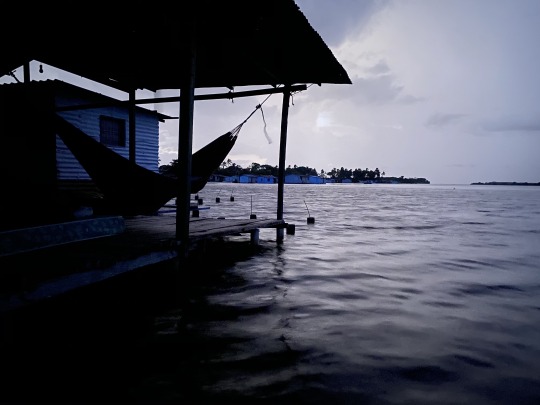
Finalmente llegué a Ologá. Un destino que en algún momento parecía alejarse del mapa con cada paso. No sin antes tener que atravesar varias pruebas, filtros cósmicos que voltearon constantemente mis expectativas y las de aquellos que me rodean. Para llegar al relámpago tuve que esperar por una pandemia. Y aunque la mente continúa buscando la lógica de los hechos, solo las fuerzas que actúan detrás de la cortina saben el cómo. Sin embargo, yo siempre tuve claro el qué. Por eso si esta nota tuviera que resumirse, diría:
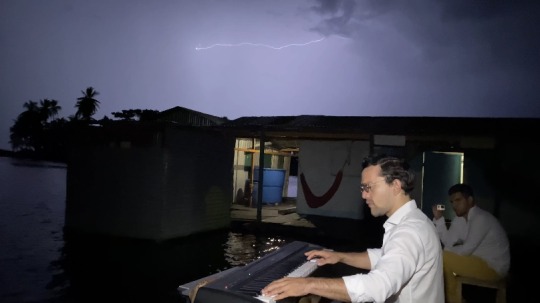
“Continúa caminando que todos los caminos llevan al cosmos. Canta, explora, vive, navega, haz el bien y crea. En esta cadena interminable de historias y versos. Porque no basta con saber, no basta con mirar, ni con leerlo o escribirlo. Continúa caminando…”
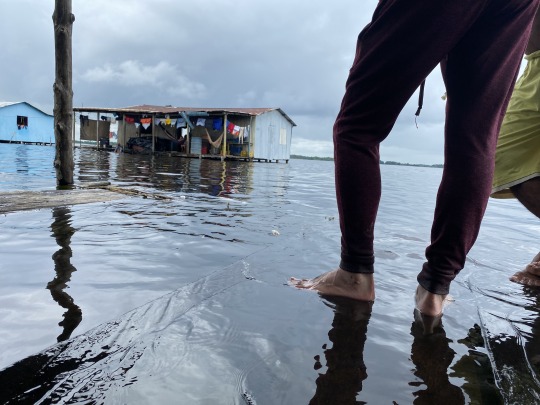
El punto azul del meme cósmico 70 apareció en el mapa. De repente, me vi rodeado de agua, durmiendo en palafitos y acompañado de niños al atardecer. La brisa de una laguna que se abraza con la de un lago / la sonrisa del viajero que llega y que contagia la comunidad que lo recibe / las tablas de madera flotando sobre el agua / la hamaca con vista panorámica a un horizonte de luz / el sonido del agua contra las laminas de zinc / la temperatura del viento / el ritmo de una cotidianidad remota / el encuentro con el silencio del sur / soledad en la tormenta / segundos de día en la noche / relámpagos;
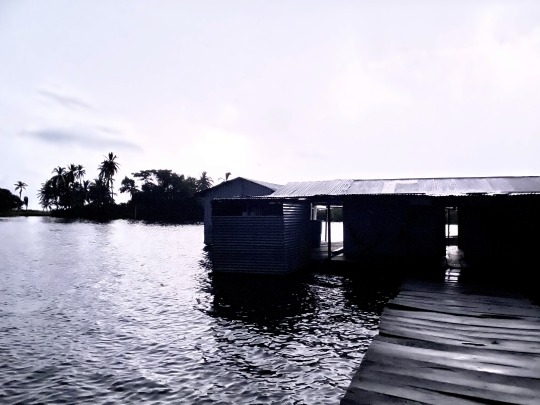
El canto insonoro que entona:
“Todo es posible en este punto azul que coincidimos ¿Irnos? En este punto azul…”
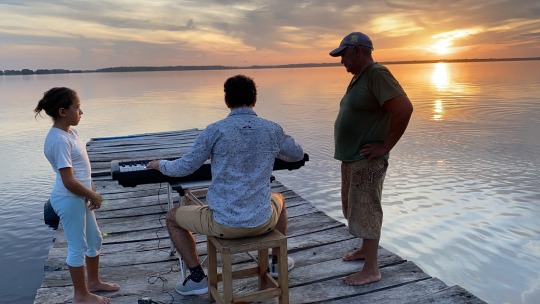
#el relámpago part1#jascompositor#sonidos del sur#relámpago del catatumbo#compositor#venezuela#ofrenda musical
2 notes
·
View notes
Text

* LOCATION SERIES: THOR’S RESIDENCES.
as the god of clouds, thor is scarcely at home and instead, he's always out and about either seeking adventure or on call for his skillset by gods and worshippers alike. this being said, he has a number of established homes both in asgard and in midgard that he frequents and could be found at whenever necessary.
ASGARD.
in the lore, thor is ascribed three dwellings -- þrúðheimr / thrudheim, or the world of might and strength, which is mentioned as his realm or kingdom (grímnismál, 4), bilskirnir, or lightning-crack, which is specified to be the name of his hall or mansion (also mentioned in grímnismál), and Þrúðvangr / thrudvang, or power-field, which could be interpreted as a different name for thrudheim, yet i chose to view as just a different location within the realm (pictured above).
as always with norse myth, not much is mentioned about any of these places. thus i choose to take some creative freedoms with their descriptions and specifications. however, according to the norse myths by heilan yvette grimes, thor was born actually in midgard/verland (the land of men) with his mother jord (noteworthy for being the personification of the earth, and a jotunn). he was quick to grow and soon jord realized she could not manage him. at just a few months old he was able to lift and kick off the ten loads of bearskin piled on his cradle to keep him warm, a worthy feat for a grown man and inimaginable for an infant. all around, he apparently got on her nerves a lot (according to etter robert james, he was all around a handful, throwing massive and destructive fits, pulling at his parents hair and ears and being a little shit all the time, basically), so she sent him to the giants vingnir and hlora to be raised as their foster son in jotunheim, the reason why sometimes thor is referred to as vingthor and hlorridi.
one small detour: in the endnotes to his translation of the völsungasaga, jesse l. byock explains: “fosterage was a norse custom of having a child raised in another household in order to extend kinship bonds or to form political alliances”. since we have to assume that the giant-asgardian conflict was still alive and well while thor was growing up, it's good to keep this in mind for later reference -- maybe not for this post, but in general.

thrudheim.
upon his return to asgard, and after killing a rock giant that threatened the aesir, thor was rewarded with some lands upon which he built a estate, and that estate was called thrudheim. in stanza 4 of grímnismál it is described as "a land [that] is holy, which i see situated near the aesir and elves". not much else is stated about the kingdom. some believe that in the afterlife worshippers of thor may end up in it, but unlike what you may think, not many of these worshippers are warriors. those tend to go to valhalla (the hall of odin) or folkvang (the hall of freya). instead, thor's hall tends to receive the common folk, peasants, farmers and workers of the land, and only a certain type of those who die in battle (primarily the "thralls", as in the servants and slaves, as opposed to the noble warriors, who will go to odin's hall). this much is mentioned in hárbarðsljóð, where odin (disguised as a ferryman) openly mocks thor with this fact during a verbal spat.
so, knowing the population it will have, we can guess that the kingdom counts with many of the amenities of a large, tightly packed farming city. i'd also envision it surrounded by farms and crop fields, specially wheat fields considering that sif, thor's wife and an earth goddess, would be living with him. it's these fields what i would call thrudvang and what would give thrudheim the appearance of being washed in gold -- on top of, of course, the gleaming strikes of lightning that would be frequently seen in the cloudy skies. it's likely the kingdom plays a big role in asgard as a hub for agriculture and livestock farming -- i.e much of the food (and some of the mead) the gods eat and drink comes from thrudheim. the harvests would be always bountiful and perfect, thanks to the kind weather and generous soil endowed to the realm by thor and sif respectively. there would be crops and flora of all kinds, as it's a very lush place, but it must be mentioned particularly the presence of oak forests due to their significance in thor's worship, as well as other plants and produce: the ash, the hazel, the birch, the rowan (also due to sif), the thistle, garlic, onion, houseleek, leek, vervain, burdock, hawthorn, the blackthorn, bramble, holly, nettle, and the rose, all of which have special properties and meaning in the cult of thor. (may be topic for a different post)

bilskirnir.
the massive hall was built for thor also around the same time as thrudheim was established as his estate. grimnismál, stanza 24, has odin reveal the following vision as he catalogs the dwellings of the gods: "five hundred rooms and forty / there are, i think, under the arches of bilskírnir / of those halls which i know to be roofed / my son's is the biggest." in gylfaginning, when he introduces thor, snorri has hár say that thor has a kingdom and a hall called bilskírnir with 540 rooms, which is the greatest of buildings, equal only to the one in valhalla. in skáldskaparmál snorri says that "owner of Bilskírnir" is a valid thor kenning, and in fact "prince of bilskirnir" is attested in the skaldic corpus. the meaning of the name is unclear, but it seems to be either "suddenly illuminated (by lightning)" or "everlasting." according to heilan yvette grimes, in bilskirnir, thor's fallen worshippers "guaffed mead and banqueted on enormous meals, and practiced their warrior skills in preparation for the last fateful battle." in regards to appearance grimes also noted that the outside of bilskirnir was studded with shields and glowed red in contrast with the inside which was a gleaming purple.
it's a gigantic "mansion", but more than that, it's tall enough to reach the skies, as apparently thor frequently shoots lightnings from the top floor. it's also here specifically where he's said to live with his wife and children.
MIDGARD.

palafito in ologá, venezuela.
ologá, in contrast to the realm of thrudheim, is a tiny settlement where less than 50 families reside in stilt houses, or palafitos, which are houses raised on piles over the surface of the soil or bodies of water. it's located south of maracaibo, 1m over the water level, and it's a community of fishermen. it's sustained mainly by said fishing but also by tourism, as it's from its palafitos that the world-famous catatumbo lightning can be comfortably seen and photographed. (you can click in their names for some nice galleries featuring catatumbo and ologá)
thor feels a natural connection to the place, given its peculiar atmospheric conditions which make it so predisposed to thunderstorm activity and lightning (which occurs during 140 to 160 nights a year, 10 hours per day and up to 280 times per hour). he has a natural pull to it, drawing special strength from the perpetual storm, which sent him to the small town sometime around the mid 50s and made him build his own stilt house there, keeping in mind his size and height, something that quickly made him the object of curiosity from the locals. he made his most used human persona, dario belmonte, be born here, and he became a very active figure in the town as a fisherman, builder, and healer and all around friend to everybody. it got to the point that eventually he pretty much confessed (more or less) his status as a god to the entire town, as there was no other way to explain his lack of aging and magical abilities. to this day, they continue to keep his secret, and he visits them sporadically every few years to make sure they're doing well.
his palafito is not more lavish than any of the other houses in the settlement and it's made from the same materials. it's a two room house and anyone else is free to use it whenever he isn't here -- he usually leaves it to his neighbors so they can rent it to tourists.
in his post-ragnarok verse thor, who was meant to die after his battle with the midgard serpent, ends up coming back to "life" in the depths of the maracaibo lake during one of the loudest thunderstorms the townsfolk had ever witnessed. he's found floating unconscious by a couple fishermen in the morning and taken to the house of one of the older citizens, who recognizes him. he's nursed back to health and it's from this point onwards that thor begins his arc exploring what is left of midgard.

farm in sweet grass county, montana.
located in the outskirts of big timber, montana, thor counts with a 4 bedroom farmhouse with a barn and 4 horse stalls + heated tack shed. next to the house sits a metal shop with concrete floor and overhead door with electricity throughout. the barn and the arena are surrounded by corrals. 40 acres surrounding the house comprise the perimeter, cross fenced as needed. there are 4 wells, one in each of the 120 acre parcels.
thor established this farm in 1995, and lived in it almost permanently between march of that same year and november of 2007. he didn't live alone, however; he invited his brother tyr -- who was then living in kentucky -- to live with him so they could be close to one another. almost simultaneously thor made tyr the part owner of the estate. in the farm they keep up to four horses, a dozen of chickens and six goats (which he keeps for milk), and a variety of crops cycled in and out depending on the season (carrots, beets, potatoes, green peas, sweet peas, broccoli, corn, and more). they also have two dogs, two huskies by the names brynjar and einar that freely roam the property, as well as tyr's three cats.
after 2007, thor still technically continues to live there, but he travels more frequently.
PHOTO CREDITS. 1 / 2 / 3 / 4.
#locations.#worldbuilding.#* thor.#i spent far too much time on this and yall better PAY ATTENTION. THERE'S GOOD THINGS HERE.#long post /
12 notes
·
View notes
Text
The Fruit of the Spirit (TARAHUMARA, CENTRAL: Bible NT)
The Fruit of the Spirit (TARAHUMARA, CENTRAL: Bible NT)

TARAHUMARA, CENTRAL: Bible NT
Galatians (Gálatas) 5:22-23
22Chopi mapalí echi jaré galá bichíyami pagótami galá nulérami ju echi Wabé Galabé Riosi Iwigala jiti, echalí aboni ne wabé galé a’nagupi, ayénachó aboni sinibí galá ganila, ayénachó aboni ne galá kilí ologá piré. A’lí mapalí aboni echirigá nulérami ju echi Wabé Galabé Riosi Iwigala jiti, echalí aboni sinibí kilí buwé mapurigá Riosi chopi…
View On WordPress
0 notes
Text
The Fruit of the Spirit (TARAHUMARA, CENTRAL: Bible NT)
The Fruit of the Spirit (TARAHUMARA, CENTRAL: Bible NT)

TARAHUMARA, CENTRAL: Bible NT
Galatians (Gálatas) 5:22-23
22Chopi mapalí echi jaré galá bichíyami pagótami galá nulérami ju echi Wabé Galabé Riosi Iwigala jiti, echalí aboni ne wabé galé a’nagupi, ayénachó aboni sinibí galá ganila, ayénachó aboni ne galá kilí ologá piré. A’lí mapalí aboni echirigá nulérami ju echi Wabé Galabé Riosi Iwigala jiti, echalí aboni sinibí kilí buwé mapurigá Riosi chopi…
View On WordPress
0 notes
Photo

⌘ Inspire1Pro en Ologá • #dronemaracaibo #ologa #relampagodelcatatumbo #dji #drone #🇻🇪#inspire1pro #droneoftheday #colorful
0 notes
Text


La Boca de Ologá representa el final de la Ciénaga de Juan Manuel, justo donde los primeros alemanes que descubrieron Ologá y Congo durante los recorridos en piraguas, allá por los 1920 y comenzaron a traer a sus familias desde Europa para compartir el resplandor zuliano.
0 notes